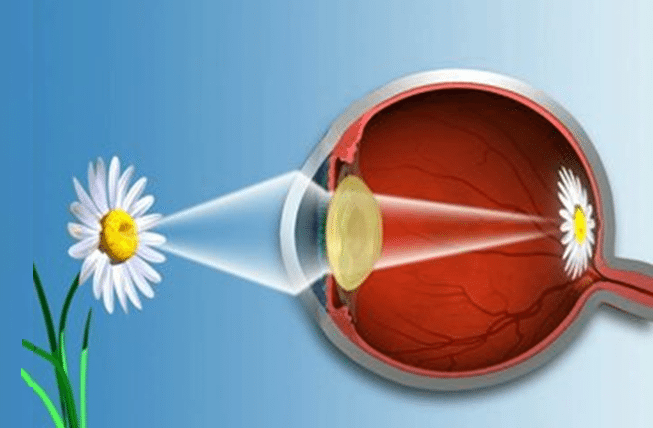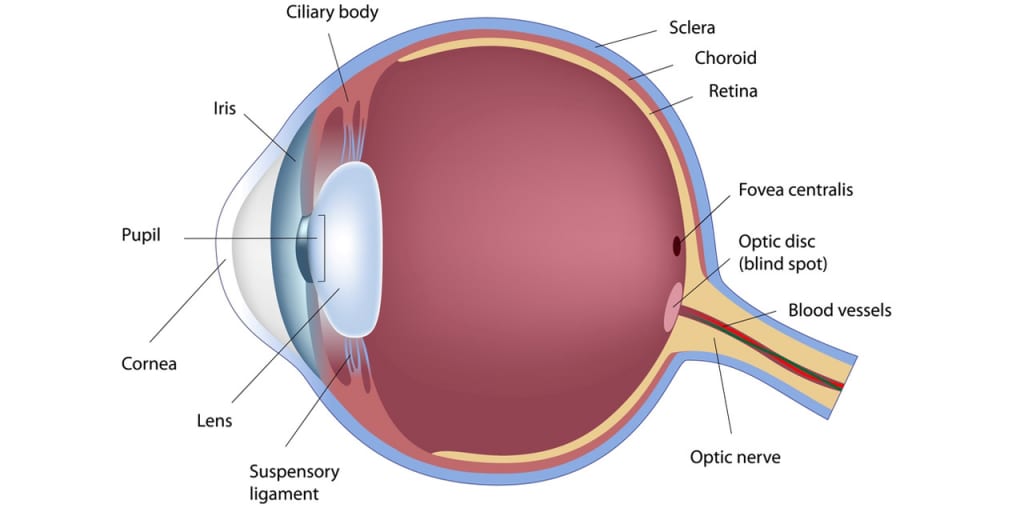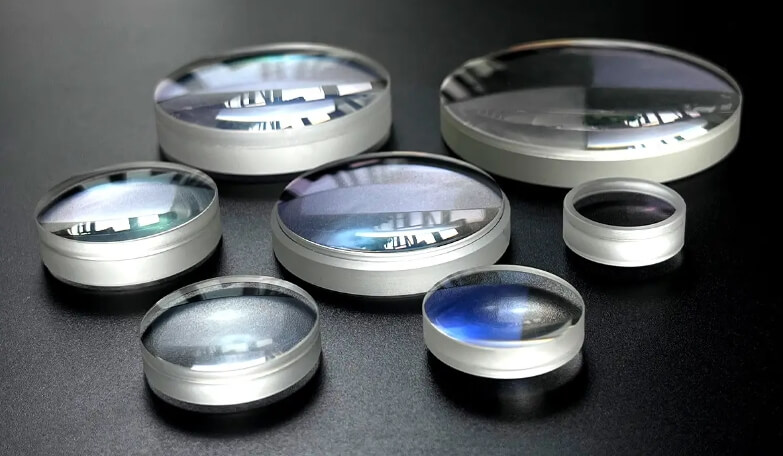The Science of Eyeglasses

- View Larger Image
The Science of Eyeglasses
In the United States, approximately 75% of the adult population uses vision correction, which includes eyeglasses and contact lenses (National Eye Institute). The importance of vision, and in turn corrective lenses for the majority of the population, is indispensable. These lenses allow people to read their favorite books, see the faces of loved ones, look at great works of art—they allow people to see the world and navigate through it.
The Human Eye
To understand how corrective lenses work, it helps to first understand how the human eye works. Light enters the eye and lands on the retina , a layer of cells found on the back of your eye. The retina reacts to incoming light and relays the information to your brain. As light enters your eye, two main things need to happen for visual clarity:
- The incoming image size must be reduced to fit onto the retina
- Light must focus on the retina (not in front or behind the retina)

These two things are accomplished by the eye’s cornea and lens. The cornea is a transparent covering of the lens, as shown in the diagram above. The lens lies between the retina and the pupil.
There are a number of factors that make the eye unable to focus light quite right. One of the most common causes of vision issues results from the eye’s inability to focus the image directly on the retina. This is the case for three of the most common vision problems: myopia, hyperopia, and astigmatism.
- Myopia, commonly known as nearsightedness, is a result of the incoming image being focused in front of the retina.
- Hyperopia, commonly known as farsightedness, is a result of the incoming image being focused behind the retina.
- Astigmatism is caused by a distortion (likely from an unsmooth lens and/or corneal surface) that creates as second focal point.
This is where corrective lenses come in!
Corrective Lenses
Corrective lenses for eyeglasses and contact lenses work by adjusting the focus point of incoming light to line up with your retina!
When considering a corrective lens, it is best to think of it as two prism lenses (triangle-shaped) put together. A prism is thicker at one end and thinner at the other end. As light passes through a prism, the light is bent (refracted) toward the thickest portion. When a corrective lens (of the correct type of power) is placed in front of the eye, the lens adjusts the focusing point of light to create a clear image, lined up with the retina.
Individuals with myopia (nearsightedness) use eyeglasses to see far away. A minus lens is used to correct myopia by pushing the focusing point farther back. A minus lens is thickest at the base, thus the light is spread away from the lens center. As the strength of the lens increases, the focal point becomes longer.
In the case of hyperopia (farsightedness), eyeglasses are used predominantly to see things up close. Depending on the severity of hyperopia, vision can be blurry for objects at any distance. A plus lens is used to correct for hyperopia by moving the focal point forward. A plus lens is thickest at the center, so it acts to bend light toward the center. As the strength of a plus lens increases, the focal point becomes shorter.
In the case of astigmatism , vision for both near and far objects appears blurry so eyeglasses are used for all distances. A cylindrical lens is used in the case of astigmatism to focus light into a single focusing point. By focusing light a one focal point instead of two, this creates clear visual input to the retina.
What light property is the most instrumental in designing eyeglasses
Search Result
- service@leoptique.com Email Messager
- (1) 514-806-1926 10am-5pm EST, Monday-Friday
- Order TrackingFAQ
Home / Blog / Vision: Understanding the Optics and Science Behind Eyeglass Lenses

Vision: Understanding the Optics and Science Behind Eyeglass Lenses
Lenses · 2023-11-21
Tags: science with glasses Prescription Lens technology Eye Health Vision care tips

When we are used to wearing glasses every day for work and life, have we ever seriously thought about the relationship between lenses and our glasses, and how lenses correct our vision? Today we will unveil the mystery of how things work, discover how glasses improve vision, and what are the scientific principles behind their design? Let’s break down some key concepts in optics so we can better understand this marvel of medical technology. It starts with light rays entering our eyes. In a normal healthy eye, these rays converge precisely on the retina after passing through the cornea and lens. But if the eye grows too long or the lens thickens, the rays fail to focus properly, causing blurred distance or near vision. Enter corrective lenses. Made from optically clear materials like plastic or glass, lenses are ground and polished to precise thicknesses that bend incoming light rays by the needed degree to counteract errors. Glasses for myopia, or nearsightedness, feature concave lenses that diverge light earlier to better focus on the retina. Meanwhile, farsighted or hyperopic prescriptions call for convex lenses to bring light convergence farther back into precise alignment. Bifocals and progressives cleverly incorporate these adjustments in a seamless transition. The fundamental science at play is simply optics – Snell’s Law explains how light refracts changing mediums based on their densities. The craft of designing lenses relies heavily on intricate math, from sphere measurements for basic refractive errors to complex polynomials for correcting irregularities like astigmatism. Digital surfacing technologies now grind materials into customized curvature profiles at resolutions nearing the micron scale. Specialty coatings apply treatments that selectively alter how light interacts, reducing glare and reflections for enhanced comfort and vision. So the next time you pop in your contacts or slip on your frames, take a moment to appreciate the science and skilled artistry behind clearly seeing the world. Modern lens design removes perceptual hurdles for so many, truly a remarkable triumph of optics and technology.
https://williamseyeworks.com/the-science-of-eyeglasses/https://leoptique.com/blog/Understanding_the_Optics_and_Science_Behind_Eyeglass_Lenses


